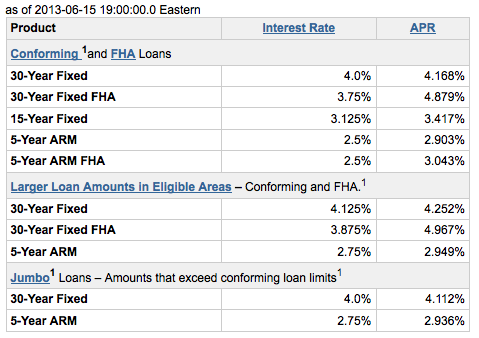Содержание

Relevant costs are those that are directly tied to a specific management decision. These costs change in the future as a direct cause of that management decision. In other words, relevant costs are those costs that experience some change, whether negative or positive, because of a decision that management makes.
Almost all of the costs related to adding the extra passenger have already been incurred, including the plane fuel, airport gate fee, and the salary and benefits for the entire plane’s crew. Because these costs have already been incurred, they are “sunk costs” or irrelevant costs. In management accounting, notion of related costing has nice significance as a result of these prices are pertinent with respect to a specific choice. A related cost for a particular determination is one which transforms if an alternate plan of action is taken. Studies have demonstrated that related costs will make a difference in a choice. A related price solely relates to a particular administration determination and which will alter in the future on account of that call.

The next 12 months salary was unavoidable as it was part of the original contract and therefore should not have been considered in the decision to replace the manager. A company acquired a building on rent for three years at an annual rental of $60,000. Response from the community was not satisfactory and after one year, the company is considering to close this retail outlet and open a new one somewhere else. Lease agreement cannot be terminated, so the Company will sublet this building at an annual rental of $35,000. Relevant cost should result in outflow of cash or economic benefits of the entity.
What is the Difference Between FBS and HbA1c
This does not mean that all costs which occur in future aren’t related value. For a value item to be related, each the conditions must be current. For example, suppose that your supervisor tells you to expect a slew of new hires next week. All your staff members use computers now, but you have a bunch of typewriters gathering dust in the supply room.
- We know that management is thinking about purchasing sewing machines and laying off two seamstresses.
- One is sunk cost, and the other is constant regardless of any alternative.
- To do so, the revenue from new scheme must be equal to or more than $550,000.
- She has held multiple finance and banking classes for business schools and communities.
Show bioBrianna has a masters of education in educational leadership, a DBA business management, and a BS in animal science.
Irrelevant Cost in Business: Meaning and Examples
They do not make any distinction and make no impact in making selections. Firstly, by mistake, https://1investing.in/ prices are taken as relevant costs. They will complicate the situation as well as increase the chance of faults. Secondly, similar unit prices of fixed manufacturing prices are taken for different exercise level.
David has helped thousands of clients improve their accounting and financial systems, create budgets, and minimize their taxes. Common costs can be ignored for the purpose of decision making. All materials on termscompared.com is subject to copyright and cannot be copied and republished without proir written permission. Interesting perspective on unskilled labour in this presentation from another country. If ‘he’ is unskilled you will only use him when necessary, so therefore unskilled is relevant. According to Kittelson, the marginal cost of housing an inmate in the Greensboro jail is $12.54 a day, while the cost at the High Point jail per inmate per day is $17.23.
BUSINESS MODELS AND OPERATING MODELS
The relevant costing can only be used to calculate the incremental costs of distinct projects. Therefore, results of different projects cannot be compared to make sensible decision, because each project will have its own relevant cost which may or may not affect the other project. As relevant costing is applied to a single decision, it is used to decide whether a particular project is feasible for the management of the business to pursue or not.

The issue is what was the true Marginal Cost of keeping someone in prison. The article rightly draws the distinction between the costs that would change and those that wouldn’t. A full discussion would include the costs of alternative treatments other than prison.
Study the definitions and types of relevant and irrelevant costs, and discover examples of relevant costs in decision-making. Only relevant costs are affected and are taken into consideration for taking a particular decision. Decision making is the process of evaluating various alternatives available and making a choice of the best alternative giving maximum profit or least cost. Relevant costs for decision making are expected future costs that will differ under various alternatives.
‘ This does not mean that all costs which occur in the future are not relevant costs. For a cost, item to be relevant, both the conditions should be present. As Michael’s labor cost varies directly as a result of the order, it should be considered as a relevant cost. In our example, with the change in activity, the mounted overheads of $seventy five,000 will change with the change from a thousand models to 1100 models. They can hamper the whole calculation and decisions relying on these will adversely have an effect on the profits of the company.
The money that you would make from continuing to do home design is an opportunity cost of choosing to eliminate it. Say you would make $1,250,000 if you kept the division but you'd only make $1,000,000 if you eliminated it. Your opportunity costs are $250,000 ($1,250,000 – $1,000,000) in cash flow. You will lose this money if you choose to eliminate the branch. The upcoming discussion will update you about the difference between relevant costs and irrelevant costs. Relevant costs are costs that are affected by a managerial decision in a particular business situation.
Example of Relevant Costs
Relevant costing suffers the limitation on this count but serves the practical objective of profit. Another issue in relevant costing is handling the opportunity cost. The difficulty of estimating opportunity cost can be temporarily overcome by extending relevant costing solution into the calculation of accounting rate of return. Relevant costs are affected by management decisions while irrelevant costs are not influenced by these decisions.
They do not change as an effect of a given management decision. While one cost may not be affected by a particular decision, it is important to keep in mind that these same costs could be affected by other management decisions. Variable or avoidable costs – the costs that will only be incurred when the decision to undertake a specific activity is taken.
These costs will stay the same whether we keep our home design branch or eliminate it. Looking into our sunk and fixed overhead costs we see that the salaries of those who work outside the division, costs of existing equipment, and rents paid to maintain the facility will not change. Differential cost is the amount by which future costs will be different, depending on which alternative is chosen.
If the new product is made, this sale won’t happen and the cash flow is affected. The original purchase price of $10 is a sunk cost and so is not relevant. In addition, another 50 units are needed for the new product and these will need to be bought in at a price of $14/unit. As another example, if ABC wants to close its medieval book division entirely, the only relevant costs will be those costs specifically eliminated as a result of the decision. These costs are relevant since these expenses change in the future due to the buying decision. A sunk cost is an expenditure that has already been made, and so will not change on a go-forward basis as the result of a management decision.
Take note that the relevant and irrelevant cost has already paid for the old machine and will continue to use it. Incremental costs – additional costs which are incurred towards a specific additional activity. Marginal analysis is an examination of the additional benefits of an activity when compared with the additional costs of that activity. Companies use marginal analysis as to help them maximize their potential profits. The relevance of value to determination alternative is determined by situation.
